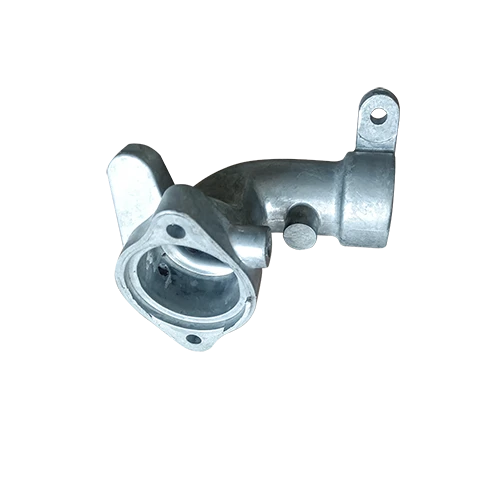Mobile:+86-311-808-126-83
Email:info@ydcastings.com
Leading Solutions in Stainless Steel Casting and Foundry Services for Various Industries
The Role of Stainless Steel Casting Foundries in Modern Manufacturing
Stainless steel has become a cornerstone material in various industries, thanks to its exceptional properties such as resistance to corrosion, high durability, and aesthetic appeal. Stainless steel casting foundries play a pivotal role in transforming raw materials into sophisticated metal components for a wide array of applications, from automotive to aerospace and commercial products. In this article, we will explore the processes involved in stainless steel casting, the advantages of this manufacturing method, and the future directions of the industry.
Understanding Stainless Steel Casting
Stainless steel casting is a process that involves pouring molten stainless steel into a pre-shaped mold to create parts and components. This casting process may employ various methods, such as investment casting, sand casting, and shell mold casting. Each method has its advantages and is selected based on the specific requirements of the component being produced.
1. Investment Casting This method is highly favorable for producing complex and high-precision parts. It typically involves creating a wax model that is coated with a ceramic shell. Once the shell hardens, the wax is melted away, leaving a cavity for the molten steel. Investment casting offers excellent dimensional accuracy and surface finish.
2. Sand Casting In this traditional process, patterns made of wood or metal are placed in sand to create a mold. The molten stainless steel is poured into the mold cavity to form parts. Sand casting is ideal for larger components, where intricate details are less critical, and it is often more cost-effective for low-volume production.
3. Shell Mold Casting This method combines elements of both sand and investment casting. It utilizes a thin shell made of sand and resin, which provides a smooth finish and allows for more complex geometries than traditional sand casting.
Regardless of the method chosen, stainless steel casting foundries must maintain strict quality control to ensure that the final products meet the required specifications and standards
.Advantages of Stainless Steel Casting
stainless casting foundry

One of the primary benefits of stainless steel casting is the exceptional mechanical properties of stainless steel itself. Stainless steel's resistance to oxidation and corrosion makes it ideal for applications exposed to harsh environments, such as marine, chemical processing, and food industry settings. Moreover, stainless steel components maintain their integrity over time, reducing the need for frequent replacements.
Additionally, stainless steel casting allows for the creation of intricate shapes that would be challenging to achieve through other manufacturing methods. This capability enables designers and engineers to innovate and develop complex components while saving material and reducing waste. The versatility of stainless steel also accommodates various surface finishes, opening the door to aesthetic applications in architecture and fashion.
The Future of Stainless Steel Casting Foundries
As industries shift towards more sustainable practices, stainless steel foundries are also evolving. Many foundries are investing in advanced technologies, such as 3D printing and automation, to enhance production efficiency and reduce environmental impact. 3D printing technology allows for rapid prototyping of casting molds, significantly shortening lead times and lowering costs, while automation streamlines the manufacturing process, minimizing human error and waste.
Furthermore, the emphasis on recycling is becoming increasingly important in the stainless steel industry. Many foundries are implementing closed-loop systems that recycle scrap metal, contributing to a circular economy. This not only conserves resources but also minimizes energy consumption during the manufacturing process, further supporting sustainability goals.
Conclusion
The stainless steel casting foundry represents a blend of tradition and modern innovation, providing essential components for a wide range of industries. As technological advancements continue to shape manufacturing processes, the future of stainless steel casting looks bright, with opportunities for growth and innovation on the horizon. With its unique properties, stainless steel is not just a material of convenience but a significant contributor to the sustainability and efficiency of modern manufacturing. This enduring material will undoubtedly keep finding its way into new applications, shaping the future of industries around the globe.
In summary, stainless steel casting foundries not only fulfill the demand for high-quality metal components but also lead the way in promoting sustainability and innovation within the manufacturing landscape.
-
Why Should You Invest in Superior Pump Castings for Your Equipment?NewsJun.09,2025
-
Unlock Performance Potential with Stainless Impellers and Aluminum End CapsNewsJun.09,2025
-
Revolutionize Your Machinery with Superior Cast Iron and Aluminum ComponentsNewsJun.09,2025
-
Revolutionize Fluid Dynamics with Premium Pump ComponentsNewsJun.09,2025
-
Optimizing Industrial Systems with Essential Valve ComponentsNewsJun.09,2025
-
Elevate Grid Efficiency with High-Precision Power CastingsNewsJun.09,2025











